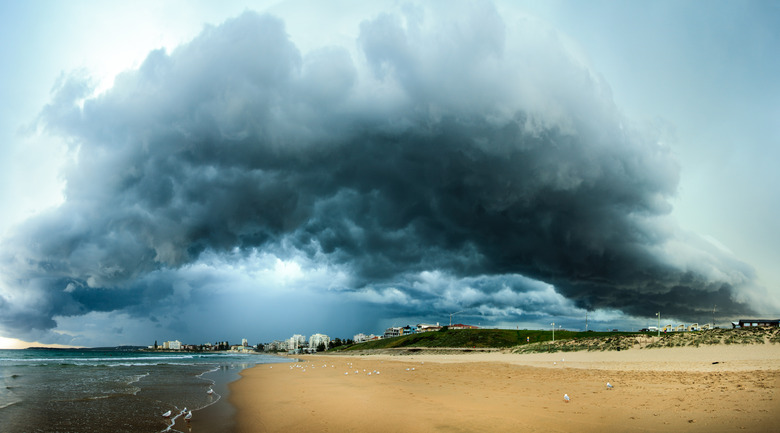Natural Changes That Can Affect An Ecosystem
Wind, rain, predation and earthquakes are all examples of natural processes which impact an ecosystem. Humans also affect ecosystems by reducing habitat, over-hunting, broadcasting pesticides or fertilizers, and other influences. The line between natural and human caused effects often blurs. For example, sediment in streams and rivers can damage these tender ecosystems. But the cause may have been a post-storm mudslide or acreage stripped bare for farming. Anything that enters an ecosystem – from sunlight to rain to contaminants – has the potential to change it. Scientists refer to these factors as drivers.
Drivers and Ecosystems
Drivers and Ecosystems
An ecosystem consists of all of the natural elements in a specific environment and the relationships among them. Ecosystems possess not only living components, such as plants and animals, but also non-living components, like air, water, soil and rocks. Types of ecosystems include forests, grasslands, tundra, lakes, wetlands, deltas and coral reefs. Drivers are any events or processes that change an ecosystem. Some have a direct influence on an ecosystem. Severe weather, such as a tornado, blizzard, hurricane or hail are natural events that directly impact an ecosystem. Animals such as a bear or mountain lion roam in search of new territory. This could have a direct impact on an ecosystem as the animal hunts food in its new territory, thereby reducing existing flora or fauna. The predatory animal's behavior is natural, but it can alter an ecosystem. Direct drivers may also be human influenced. The introduction of a species not normally associated with a particular ecosystem – such as kudzu, silver carp or zebra mussels – has a devastating impact on that ecosystem.
Ecological Succession
Ecological Succession
Most ecosystem changes occur over time rather than as a result of a single, sudden event. Scientists call one such slow process ecological succession. As this process plays out, species populations fluctuate and sometimes disappear entirely. A new species entering the ecosystem – such as the bear or mountain lion example – is one possible trigger to launch ecological succession. Evolutionary changes that improve a particular species' adaptation is another driver. For instance, depleted food sources might change migration patterns, or one species might adapt behaviors that allow it to best its competitor species. Ecological changes to one species often influence the adaptation of others. When plants first developed flowers millions of years ago, insects adapted an attraction to nectar which had the benefit of spreading plant pollen.
Severe Storms
Severe Storms
The sheer destructive force of storms, floods, tropical storms and tornadoes often impact ecosystems. Cataclysmic storms, such as hurricanes, bring with them high winds, storm surges and drenching rains. These factors damage ecosystems that include coral reefs, coastal marshlands and inland forests. Storm surges pour saltwater inland along coastal areas, killing freshwater vegetation and some invertebrates such as clams. Although storms are initially destructive, they may bestow some benefits to an ecosystem, such as washing away pollutants.
Other Contributors
Other Contributors
Droughts also affect ecosystems as plant species adapted to drier climates replace those that thrive on moisture. Extended droughts increase fire risk, a natural event which can swiftly reduce a forest ecosystem. When forests redevelop, exotic foreign species may colonize there, growing faster than native ones. Naturally occurring geological hazards that affect ecosystems include volcanoes, earthquakes and tsunamis. Biological factors – disease, invasive species, algae blooms – also contribute to changes in ecosystems.
Cite This Article
MLA
Harris, Amy. "Natural Changes That Can Affect An Ecosystem" sciencing.com, https://www.sciencing.com/natural-changes-can-affect-ecosystem-6777/. 13 March 2018.
APA
Harris, Amy. (2018, March 13). Natural Changes That Can Affect An Ecosystem. sciencing.com. Retrieved from https://www.sciencing.com/natural-changes-can-affect-ecosystem-6777/
Chicago
Harris, Amy. Natural Changes That Can Affect An Ecosystem last modified August 30, 2022. https://www.sciencing.com/natural-changes-can-affect-ecosystem-6777/
